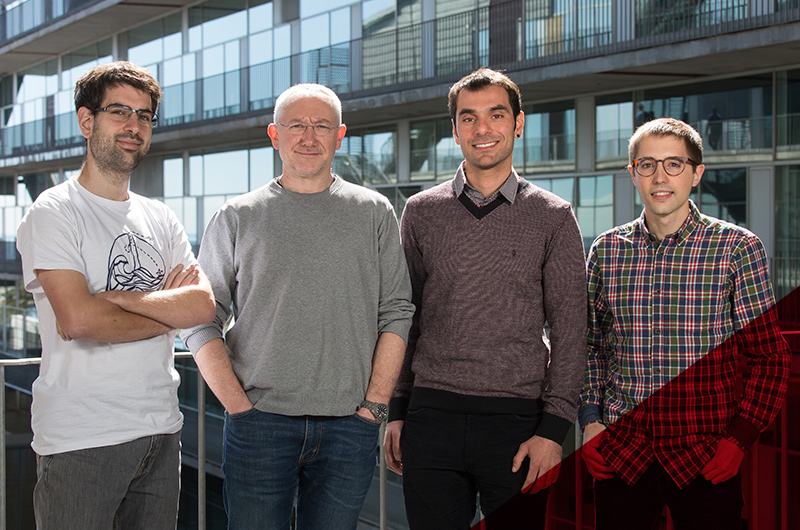Structural Bioinformatics
Baldo Oliva

Group website
Research Outline
Macromolecular interactions play a relevant role among the different functions of a cell. Identifying the protein-protein interaction network of a given organism (interactome) is useful to shed light on the key molecular mechanisms within a biological system. We interrogate protein structure to unveil its function, generate the network of interactions and to relate genes/proteins with diseases by exploiting the topology of the network. Simlarly, the regulatory network implies the formation of large macromolecular complex of transcription in which proteins interact with DNA. We also interrogate the structure of these complexes to relate other types of mutations affecting the final network.
Research Lines
isPBM (in silico protein binding micro-arrays): Structural modelling of the binding between transcription-factors and DNA with biomedical applications in networks and systems medicine.
We use the structures of trancription-factor (TF) complexes with DNA to calculate family-specific statistic potentials for the amino-acid-nucleotide interactions and characterize the specificity of the interactions between TFs and their DNA motifs. We computationally create Position-Weight-Matrices (PWMs) of TFs based on modelling structures and study: 1) the prediction of DNA binding motifs; 2) the change of specificity caused by mutations; and 3) produce a protein-engineering of a TF highly specific for a DNA motif. We analyse how the changes of specificity of TF-DNA interactions caused by mutations affect the rewiring of the protein-interaction network. Our goal is to understand the mechanisms of recognition and interaction of TFs with their corresponding DNA binding site, focused in the biomedical applications in networks and systems medicine.
Team during 2017-18
- Postdocs: Emre Guney.
- PhD students: Joaquim Aguirre, Alberto Meseguer.
- Research visits: Narcís Fernández-Fuentes (UVic, Professor). Visitor since 2017.
Selected publications 2017-18
- Garcia-Garcia J, Valls-Comamala V, Guney E, Andreu D, Muñoz Fj, Fernandez-Fuentes N, Oliva B. (2017) iFraG: A protein-protein interface prediction server based on sequence fragments. J Mol Biol. 3;429(3):382-389.
- Salat-Canela C, Paulo E, Sánchez-Mir L, Carmona M, Ayté J, Oliva B, Hidalgo E. (2017)Deciphering the role of the signal- and Sty1 kinase-dependent phosphorylation of the stress-responsive transcription factor Atf1 on gene activation. J Biol Chem. 292(33):13635-13644.
- Rubio-Perez C, Guney E, Aguilar D, Piñero J, Garcia-Garcia J, Iadarola B, Sanz F, Fernandez-Fuentes N, Furlong Li, Oliva B. (2017) Genetic and functional characterization of disease associations explains comorbidity. Sci Rep. 7(1):6207.
- Marín-López Ma, Planas-Iglesias J, Aguirre-Plans J, Bonet J, Garcia-Garcia J, Fernandez-Fuentes N, Oliva B. (2018) On the mechanisms of protein interactions: predicting their affinity from unbound tertiary structures. Bioinformatics. 34(4): 592-598.
- Antonio Cuadrado, Gina Manda, Ahmed Hassan, María José Alcaraz, Coral Barbas, Andreas Daiber, Pietro Ghezzi, Rafael León, Manuela G López, Baldo Oliva, Marta Pajares, Ana I Rojo, Natalia Robledinos-Antón, Angela M Valverde, Emre Guney, Harald Hhw Schmidt. (2018) Transcription factor NRF2 as a therapeutic target for chronic diseases: a systems medicine approach. Pharmacological reviews 70 (2), 348-383.
Other relevant information 2017-18
CONGRESS: Systems Biology: Networks (CSHL meetings). YEAR 2017. Title: Genetic and functional characterization of disease associations explains comorbidity. Oral presentation: Baldo Oliva.
